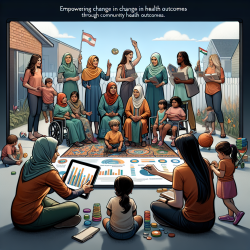The intricate relationship between brain structure and language development in children born extremely preterm (EPT) has been a subject of growing interest in recent years. A recent study titled "Language performance and brain volumes, asymmetry, and cortical thickness in children born extremely preterm" sheds light on this complex interplay. This blog post aims to help practitioners implement the outcomes of this research to enhance their therapeutic approaches and encourage further exploration in this critical area.
The Study at a Glance
The study focused on children born EPT, examining their brain volumes, asymmetry, and cortical thickness using T1-weighted MRI scans. Researchers compared these parameters with language outcomes assessed at 12 years of age. The findings revealed that children born EPT had reduced brain volumes and cortical thickness in language-related regions compared to term-born controls. However, volumetric asymmetry did not differ significantly between the two groups.
Key Findings and Implications for Practice
- Reduced Brain Volumes: The study found that EPT children had smaller brain volumes in language-related regions. This suggests that these areas may be particularly vulnerable to the effects of extreme prematurity.
- Cortical Thickness: Cortical thickness was generally reduced in EPT children, aligning with previous findings on very preterm populations. This reduction may impact language processing capabilities.
- No Significant Asymmetry Differences: Despite structural reductions, there were no significant differences in brain asymmetry between EPT and term-born children. This indicates that asymmetry might not be a reliable predictor of language outcomes in this group.
- Associations with Language Outcomes: The volume of language-related regions was positively associated with language performance in EPT children before adjusting for full-scale IQ. This highlights the potential of using brain volume as a biomarker for language impairment.
Implementing Research Findings
Practitioners can leverage these findings to refine their therapeutic strategies for EPT children. Here are some actionable steps:
- Early Intervention: Given the vulnerability of language-related brain regions, early intervention programs should be prioritized for EPT children to support optimal language development.
- Comprehensive Assessments: Incorporate regular assessments of both cognitive and language abilities to identify potential impairments early and tailor interventions accordingly.
- Targeted Therapy: Focus therapy on enhancing neural plasticity in affected regions through activities that stimulate both expressive and receptive language skills.
Encouraging Further Research
This study opens several avenues for future research. Investigating the effects of early language interventions on brain morphology could provide valuable insights into optimizing therapeutic approaches. Additionally, exploring functional MRI methods might offer a deeper understanding of how asymmetry influences language outcomes.
The journey to understanding the full impact of extreme prematurity on brain development is ongoing. By staying informed about the latest research and integrating these findings into practice, practitioners can make significant strides in supporting the developmental trajectories of EPT children.
To read the original research paper, please follow this link: Language performance and brain volumes, asymmetry, and cortical thickness in children born extremely preterm.










